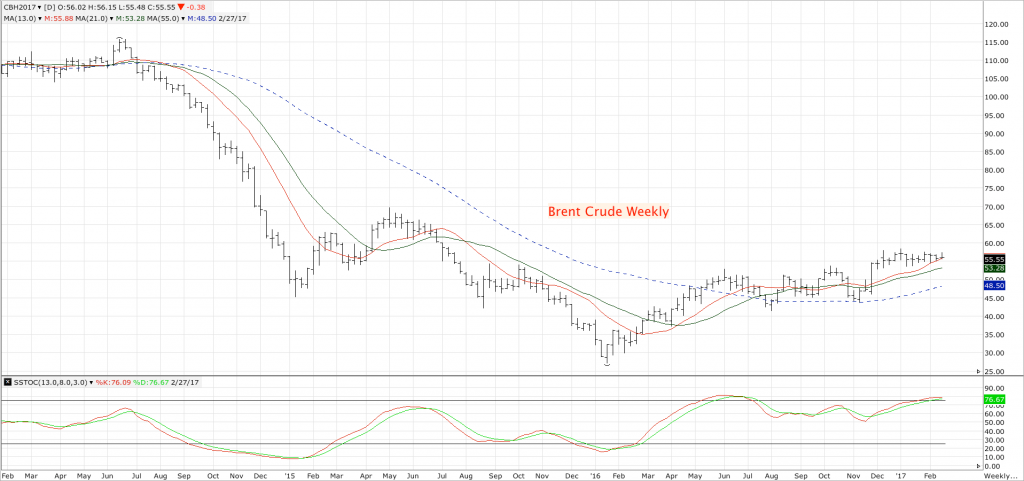By: Dan Hueber –
In just a few short hours we will have wrapped up the trade for the second month of 2017 and at least this morning, we have plus signs in front of the figures across the grain and soy markets. One would have to consider this to likely be nothing more than a Tuesday undo bounce with the potential for additional long liquidation ahead but it is still nice to see the strength. If we were to wrap up trade right now, for the month nearby corn would be 3-cents higher, beans down 7-cents and wheat up 2-cents. Not all that bad considering February is seasonally considered a down month. As of the close last evening, the average price for the month for December corn was 3.96, so we should end up a full $.10 above last year for crop insurance purposes and 10.19 for beans, an increase of $1.34 over last year.
There are stories circulating overnight that Saudi Arabia and by default OPEC would like to see crude oil work up to the $60 a barrel level in 2017.

Currently the price of Brent has been chopping in the $55/56 range. While that hardly seems like a monumental challenge if they are able to maintain production restraint with their members but it does present an interesting challenge for the organization. They believe that a push to the $60 level would be enough to encourage investment within the group but would not be high enough to really stimulate a massive increase in the shale production here in the U.S. Good luck with that. It is interesting to point out that since the beginning of the year, the U.S. has witnessed quite a spike in our crude exports, basically doubling from less than 600,000 barrels a day to over 1.2 million. Now before you become too excited about this, recognize that we remain as one of the world’s largest importers and it was really a confluence of circumstances such as favorable freight rates and a glut of inventory at the right locations that fell into place to allow this to happen. That said, keep in mind that up until 2015 there were very tight limitations on any crude being exported from this nation so we are playing with a new set of rules. OPEC is right to be concerned about prices elevating to the point where new exploration/production becomes economically encouraged.
Wet conditions are evidently creating some issue in Brazil. Dr. Cordonnier reports that a section of the major highway, BR-163 (Soybean Highway) that connects Mato Grosso and the Amazon has yet to be paved (est. 150 kilometers) and currently is a muddy mess with literally thousands of trucks now stranded or at least severely delayed. This in turn has meant beans are not getting on to barges to head for ports in the north hampering or delaying overall shipments. It is estimated that around 25% of the exports will leave from the northern ports this year. Of course, this has been Brazil’s Achilles heel for years and is at least one of the reasons more buyers have not completely shifted demand to that nation. While I am sure the economic recession that they have been grappling with has delayed these infrastructure projects but keep in mind, that is only a delay not a cancellation.